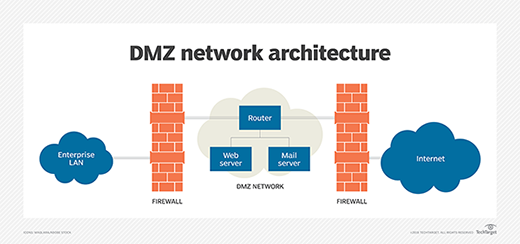Have you ever wondered how businesses keep their networks secure while maintaining high performance? The answer often lies in using DMZ networks. But what exactly is a Demilitarized Zone, and how does it benefit businesses? Let’s explore how Demilitarized Zone networks improve both security and performance.
Understanding Demilitarized Zone Networks
A DMZ (Demilitarized Zone) network is a separate network between an internal network and the external internet. It acts as a buffer zone, adding an extra layer of security. This setup protects sensitive internal networks from external threats while allowing public access to certain services.
Enhanced Security Measures
Demilitarized Zone networks provide enhanced security measures. By isolating external-facing services like web servers and email servers, Demilitarized Zone protect internal networks. Any breach in the Demilitarized Zone is contained, preventing attackers from reaching sensitive internal systems. This layered security approach reduces the risk of cyber-attacks.
Controlled Access
Controlled access is a key benefit of Demilitarized Zone networks. Businesses can regulate who accesses what services. This is done through firewalls and access control lists (ACLs). By setting strict rules, businesses can ensure only authorized users reach critical resources. Controlled access minimizes the chances of unauthorized access.
Reduced Attack Surface
A Demilitarized Zone network reduces the attack surface. By segregating the internal network from the external-facing services, there are fewer points of entry for attackers, making it harder for cybercriminals to penetrate the network. A smaller attack surface means a more secure network environment.
Performance Optimization
DMZ networks can optimize performance. By offloading public services to theDemilitarized Zone, internal networks experience less traffic, ensuring that internal operations run smoothly. The Demilitarized Zone handles most of the external traffic, allowing internal systems to perform better. This separation improves overall network efficiency.
Better Monitoring and Logging
Demilitarized Zone networks enhance monitoring and logging. Placing monitoring tools in the Demilitarized Zone allows businesses to track incoming and outgoing traffic. Logs from the Demilitarized Zone provide valuable insights into potential threats. This helps in early detection and proactive security measures. Better monitoring leads to faster threat response.
Support for Remote Access
Support for remote access is another advantage. Businesses often need to provide remote access to employees and partners. A Demilitarized Zone network offers a secure way to do this. Remote users can access necessary services without compromising internal security. Secure remote access is crucial in today’s digital workplace.
Simplified Network Management
Demilitarized Zone networks simplify network management. Administrators can focus on securing and maintaining each area separately by separating external services from internal ones. This targeted approach makes managing updates, patches, and configurations easier. Simplified management leads to more efficient network operations.
Compliance with Security Standards
Many businesses need to comply with security standards. Demilitarized Zonenetworks help meet these requirements by enforcing strict security protocols. They ensure that sensitive data is protected and access is controlled. Compliance with standards builds trust and avoids regulatory penalties.
Cost-Effective Security Solution
Demilitarized Zone networks provide a cost-effective security solution. They enhance security without the need for expensive hardware. Existing infrastructure can often be used with additional configurations to create a Demilitarized Zone, making DMZ networks a budget-friendly option for improving security.
Barracuda says, “The goal of a Demilitarized Zone is to add an extra layer of security to an organization’s local area network. A protected and monitored network node that faces outside the internal network can access what is exposed in theDemilitarized Zone, while the rest of the organization’s network is safe behind a firewall.”
Conclusion
Demilitarized Zone networks offer significant benefits for businesses. Key advantages include enhanced security measures, controlled access, and reduced attack surfaces. They also optimize performance, improve monitoring, and support secure remote access. Simplified management and compliance with security standards add to their value. Additionally, Demilitarized Zone networks provide a cost-effective solution for robust security.
Implementing a Demilitarized Zone network is a strategic move for any business. It ensures that sensitive internal systems are protected while maintaining high performance. By understanding and leveraging the benefits of a Demilitarized Zone, businesses can create a secure and efficient network environment. This protects sensitive information and ensures the smooth operation of critical business functions.


